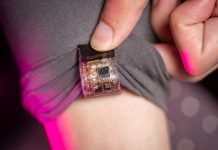
Imagine a robot that can walk, hop, and even swim—all without a brain, electronics, or even a line of code.
A team of researchers from AMOLF in Amsterdam has created just that: a soft robot powered solely by air and physics.
This innovative design challenges the idea that robots need complex computers or artificial intelligence to move in smart ways.
In fact, this soft robot is one of the fastest of its kind, reaching speeds of 30 body lengths per second. To put that in perspective, a Ferrari covers only about 20 lengths per second.
What makes this robot so unique is its simplicity. It has no computer, no sensors, and no central controller.
Its movement comes entirely from the way its body interacts with its surroundings.
When air is pumped through its soft, tubular legs, they start to wobble and oscillate, just like those inflatable tube dancers you see flailing around outside car dealerships.
On their own, the legs just wiggle randomly. But when they’re connected, their movements sync up, creating smooth, coordinated motion. Suddenly, the robot takes off—no coding required.
This ability to self-organize extends to different environments too. When the robot hits an obstacle, it automatically adjusts its path.
If it moves from land to water, its legs switch from a hopping motion to a swimming stroke—all without any external commands. According to Mannus Schomaker, one of the researchers, this kind of decentralized intelligence is something we also see in nature. Sea stars, for example, coordinate their many tube feet using only local feedback and body dynamics, not a brain.
Lead author Alberto Comoretto describes it as “order emerging from chaos.” With just a continuous stream of air, the robot’s legs begin to move in sync, much like fireflies flashing together or heart cells beating in unison.
This natural synchronization allows the robot to move with surprising grace and speed, even though it’s made from just soft tubes and air.
The research team, led by Bas Overvelde, believes this simple design could pave the way for a new kind of robotics. Overvelde even hesitates to call it a robot, preferring to think of it as a machine that mimics life-like behaviors through basic physics, not technology.
Looking ahead, this concept could lead to smart pills that deliver medicine to targeted areas in the body without electronics, or even mechanical exosuits that boost human strength without processors. It might also prove ideal for harsh environments like space, where electronics often fail.
The researchers hope this breakthrough inspires others to rethink robotic design, focusing not on complicated electronics, but on the natural principles of physics. With this new approach, robots of the future might be simpler, more efficient, and more adaptable than ever before.



